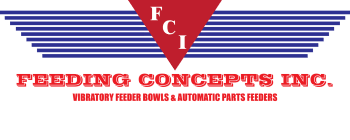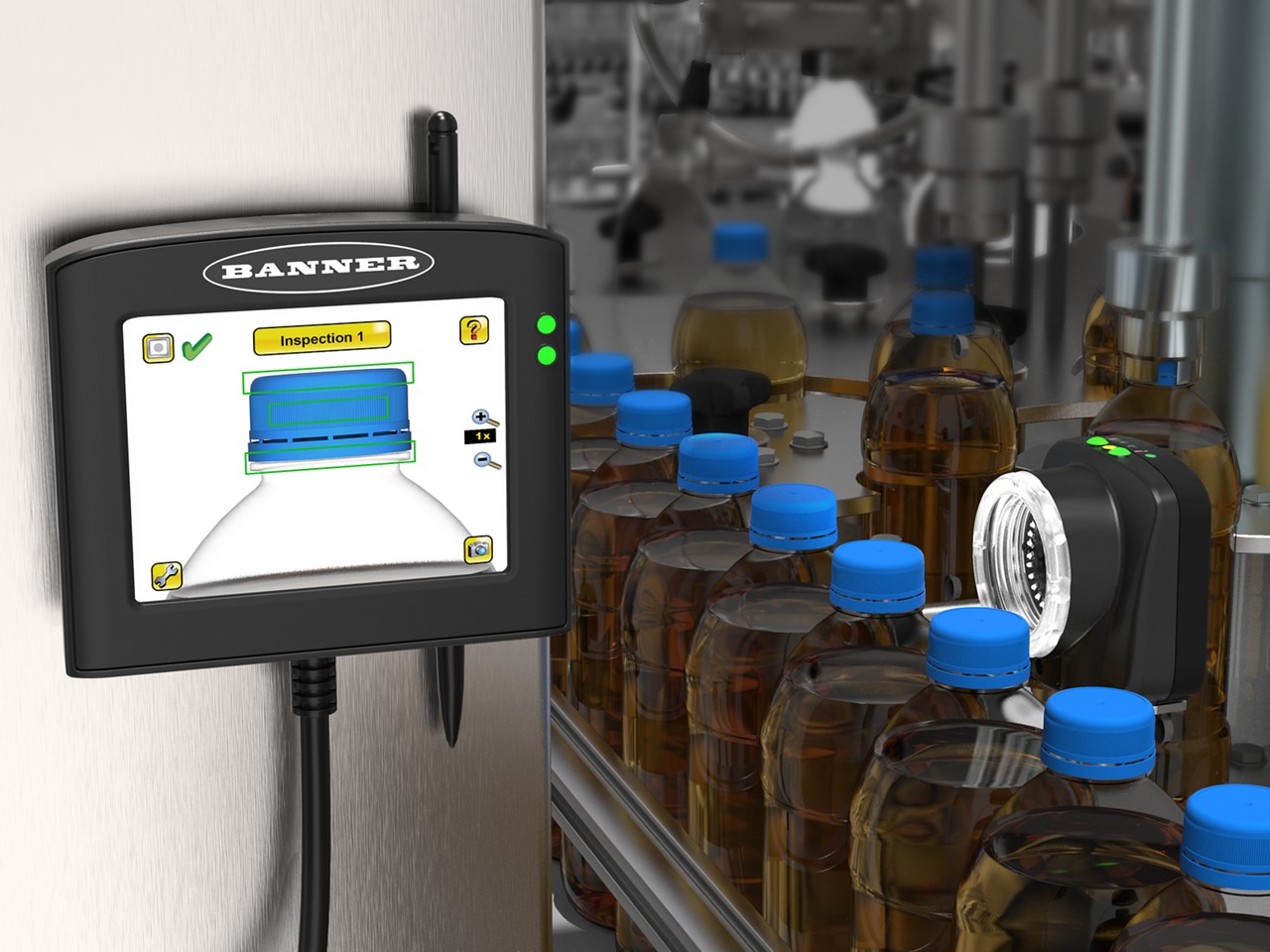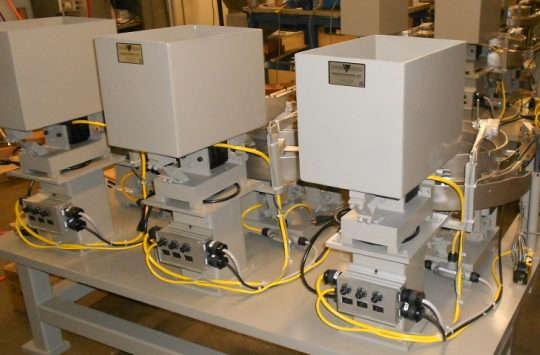Banner has recently introduced a new addition to their iVU line. They have added a sensor capable of color inspection while also still having the ability to be reprogrammed on-site. The traditional ivu could only handle grayscale applications and patterns. With this added ability we have seen many opportunities for applications involving quality control and orientation based on color.
Typical contrast sensors have their core capabilities and don’t always work for some applications. The older contrast sensors were not user-friendly and didn’t have much flexibility. Now with the iVu integration the part changeover processes are seamless for the end user. Having that ability to see what is going on with the built-in screen is a big pro to many production managers and operators.
The iVu Color sensor implemented with a vibratory feeder bowl can monitor parts for color or color variations while also looking at type, size, orientation, or position. The three main functions of this color system are average color, color area, and color compare. Some examples of applications would be checking for stain color on wood or metal, verify color on bottle cap, confirm label color on a package, verify label based on color, monitor ink color changes over time, and provide color information for part sorting. The most utilized feature of this vision system for vibratory feeders is the part sorting based on color.
If you think this system would be a good addition to your next feeding system, please consult us today.



